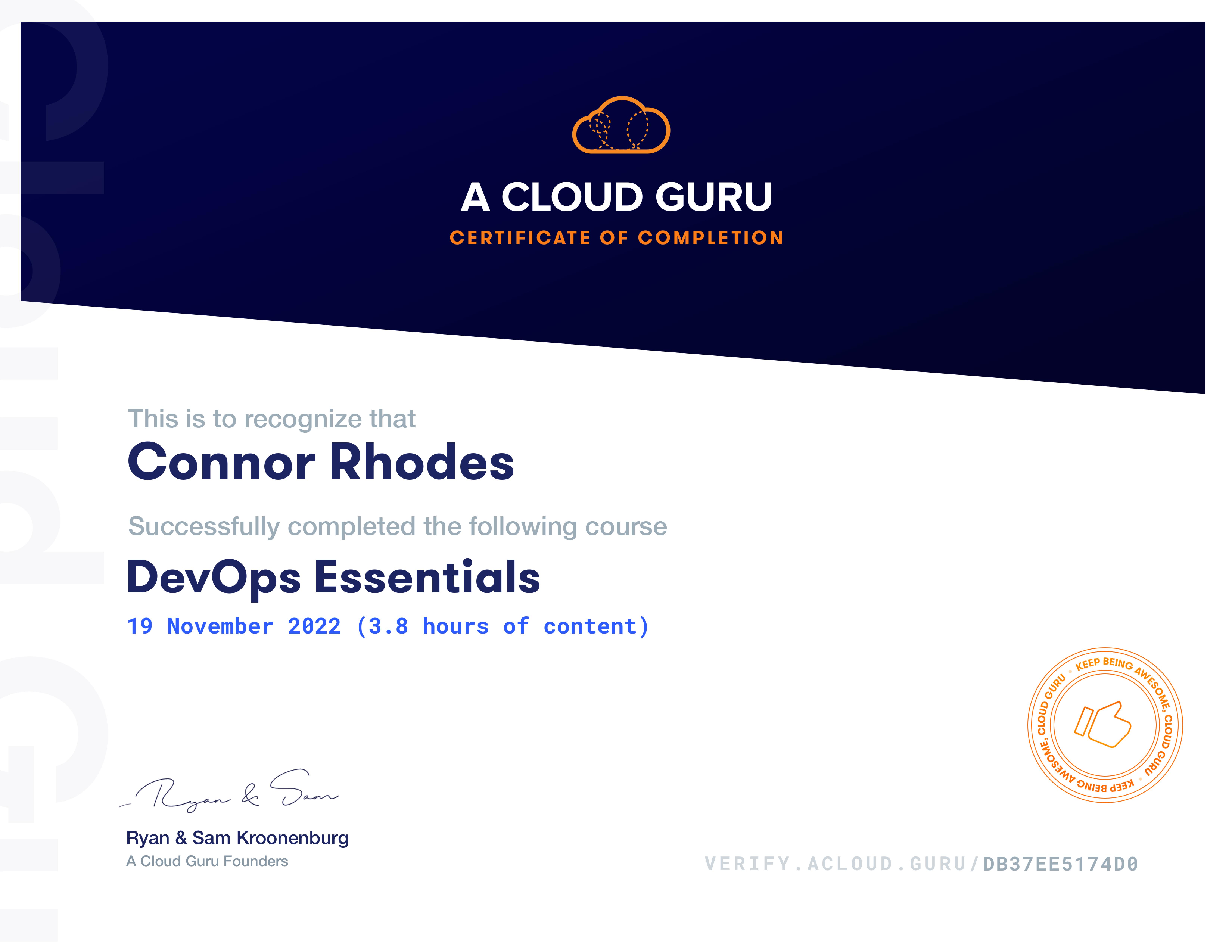DevOps Essentials Course

William Boyd’s DevOps Essentials course provides an introduction to the DevOps approach to writing and deploying software. Boyd begins with the historical and conceptual background for the DevOps movement. DevOps is best understood as a cultural movement towards stronger collaboration and shared responsibilty between engineers who write code (Dev) and engineers who deploy code (Ops.) This cultural movement gave rise to a set of practices that enable the two groups of engineers to work together more effecively and an ecosystem of tools to support this goal.
From a tooling perspective, this course focuses primarily on git (which I have studied before ) and Jenkins. This course’s capstone lab, in particular, presents you with a fully-built CI/CD pipeline consisting of a git repo, a Jenkins server, a staging web server, and a production web server. Through the course of the lab you merge a feature branch into production and deploy it to the staging and production web servers. You also simulate a deployment of bad code and go through the process of rolling back to the last good deployment.
My key takeways from this course were:
- The insight that DevOps is best understood as a cultural movement first which gives rise to practices that produce tooling. These practices and tooling are not DevOps per se. They are products of the DevOps movement.
- Understanding how Jenkins works as part of a CI/CD pipeline. Going through the process of deploying a code change to production and rolling back from a broken deployment helped me understand why Jenkins is so popular in the CI/CD space.